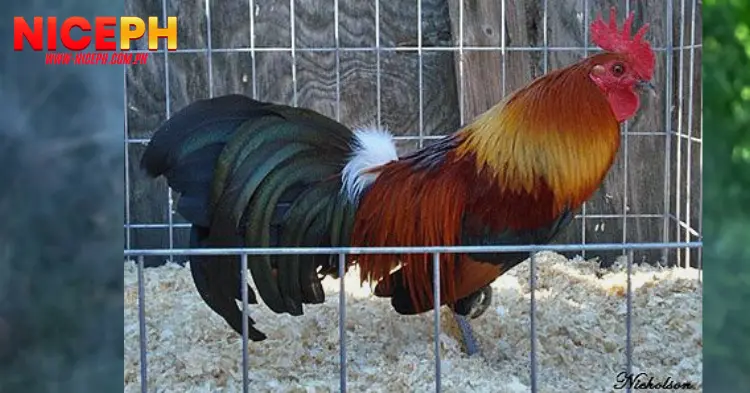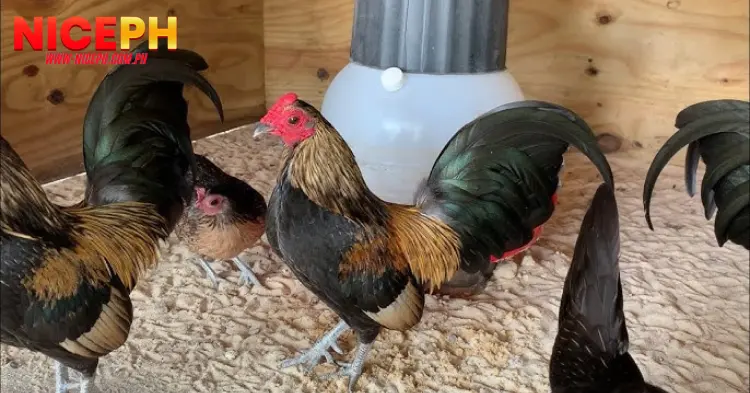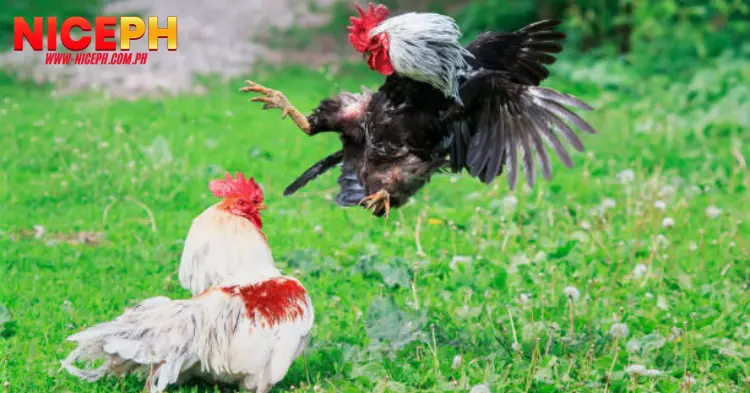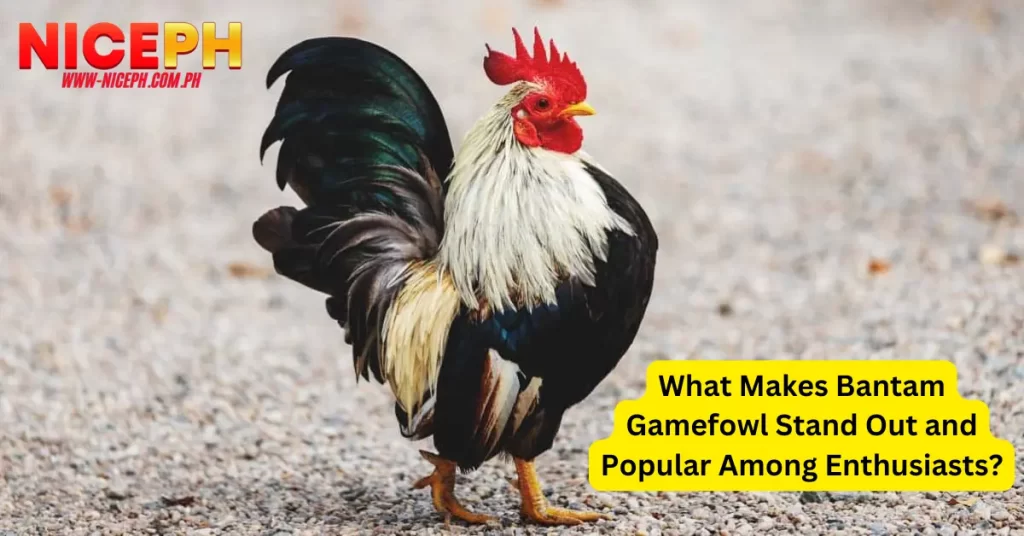Bantam gamefowl are a small breed of chickens widely recognized in the Philippines and Southeast Asia. With their striking appearance, energetic personality, and remarkable fighting ability, they have become a popular choice for enthusiasts who raise them as ornamental birds or for cockfighting competitions.
In this article, NicePH explores the unique features of bantam gamefowl, including their physical characteristics, temperament, care, nutrition, and their role in cockfighting culture.
Overview
The trend of raising gamefowl is booming in many areas, offering various breeds for enthusiasts to invest in. However, with their hidden strength and unique features, are particularly worth the trust of breeders.
Physical Characteristics
Bantam gamefowl are small in size, typically standing around 20–25 cm tall and weighing between 0.5–1 kg. Their plumage comes in a variety of colors, such as black, white, yellow, and red, with some featuring unique multi-colored patterns. Their legs are usually yellow or pale gray, complemented by a bright red comb, adding to their distinctive appearance.

- Body Build: Bantam gamefowl are compact, agile, and elegant. They are often considered the most visually appealing among gamefowl breeds.
- Tail and Comb: They boast long, sleek tail feathers and an upright red comb that accentuates their beauty.
- Crowing: Their crowing, characterized by a high-pitched, melodic sound, is another trait that captivates breeders.
- Fighting Ability: Bantam gamefowl are known for their swift, aggressive fighting style and well-developed spurs, which make their strikes visually impressive and highly impactful.
Bantam gamefowl consistently rank among the top favorites in the cockfighting community, particularly in southern regions, where breeders have developed effective rearing techniques. However, producing a high-quality bantam gamefowl requires a well-structured and disciplined breeding process.
Temperament
Bantam gamefowl are lively, aggressive, and agile. These traits make them ideal candidates for cockfighting competitions. Their energetic and curious nature also makes them great pets for those who enjoy keeping active and engaging birds.
=> Read more: Effective Methods to Make Healing Balms for Fighting Roosters
Essential Tips for Raising Bantam Gamefowl

Raising bantam gamefowl requires experience and careful planning. To develop a reliable and strong fighter that suits your preferences, consider the following guidelines:
- Choose Carefully: Conduct thorough research before purchasing a bantam gamefowl to ensure you select a high-quality bird.
- Early Care: Within the first 24 hours after hatching, chicks must be fed clean, uncontaminated food.
- Proper Nutrition: Provide a balanced diet rich in essential nutrients to support optimal growth and health.
- Clean Environment: Regularly clean their living space to prevent illnesses and maintain a healthy environment.
- Vaccination: Administer vaccinations to boost their natural immunity against common diseases.
- Regular Monitoring: Check your gamefowl daily to detect and address any health issues early.
- Separation: After about seven months, separate them from the flock to prevent unnecessary fights that could cause injuries.
- Sun Exposure: Allow them to bask in the sun for 1–2 hours daily (preferably between 7 AM and 8 AM) to absorb essential vitamins.
- Supplementary Diet: In addition to staple foods like rice grains, consider feeding them items like eggs or bananas to enhance their strength. Avoid foods that lead to excessive fat accumulation, as bantam gamefowl rely on agility during fights.
Care and Nutrition for Bantam Gamefowl
Caring for bantam gamefowl requires a thorough understanding of their dietary needs, living conditions, and disease prevention strategies.
1. Nutrition
- Primary Foods: Corn, rice, green vegetables, and mixed feed.
- Supplements: Occasional vitamins and minerals to boost resistance.
- Feeding Schedule: Feed 2–3 times daily, adjusting based on the bird’s age and health.
2. Living Conditions
- Temperature: They thrive in environments between 22–30°C.
- Hygiene: Regular cleaning of their coop minimizes the risk of diseases.
- Space: Ensure ample space for movement and activity.
Training for Fights

Raising a competitive bantam gamefowl involves a combination of proper care and effective training. Not all training methods suit bantam gamefowl, so it’s crucial to follow appropriate techniques:
- Sparring: Allow sparring sessions twice a week, starting about a month before a major competition.
- Skin Toughening: Apply herbal remedies to their skin regularly to make it tougher and more resilient.
- Exercise: Encourage running in circular pens during early morning hours (7–8 AM) for stamina building.
- Rest and Recovery: Provide adequate rest and nutrition to keep them in peak condition.
- Health Check: Ensure they are in optimal health before entering any competition.
=> Read more: How to Build a Sabong Training Run to Boost Gamefowl Stamina
Influence On Cockfighting Culture

Bantam gamefowl are often favored in cockfighting due to their combative nature and exceptional fighting skills. Daily training sessions of 15–20 minutes, combined with a specialized diet, prepare them for competition and ensure they remain in top form.
Advanced Tips for Breeding and Training Bantam Gamefowl
- Frequent Sparring: Sparring should occur every 2–3 days to ensure the bird remains sharp. Limit to two sessions per week, especially in the month leading up to a competition. This prevents overexertion and preserves their fighting spirit.
- Skin Conditioning: Regularly rub herbal balms or turmeric mixtures onto their skin to enhance its toughness and elasticity.
- Running Drills: Train your bantam gamefowl in circular pens (quần bội) to improve agility and stamina. Morning sessions between 7 AM and 8 AM are ideal for achieving optimal results.
- Individual Pens: Keep bantam gamefowl in separate enclosures to avoid unnecessary fights that can lead to injuries.
- Nutritional Support: A diet tailored to training periods should include additional protein and energy sources to enhance performance.
- Health Monitoring: Ensure thorough health checks and provide rest before major competitions to guarantee peak performance.
=> Are you looking for a reputable and top-quality casino for betting? Try our partners: Goal11 Casino.
Final Thoughts
Raising bantam gamefowl requires a combination of dedication, knowledge, and proper techniques. From selecting the right breed to implementing effective training methods, the journey to raising a strong, agile, and competitive bird is a rewarding one.
By following the detailed tips shared in this article, breeders can nurture bantam gamefowl to become not only robust fighters but also cherished pets. Stay tuned to NicePH for the latest insights and techniques in bantam gamefowl care and training.
=> Read more: Advanced Methods for Training Fighting Roosters: Techniques Used by Experts

